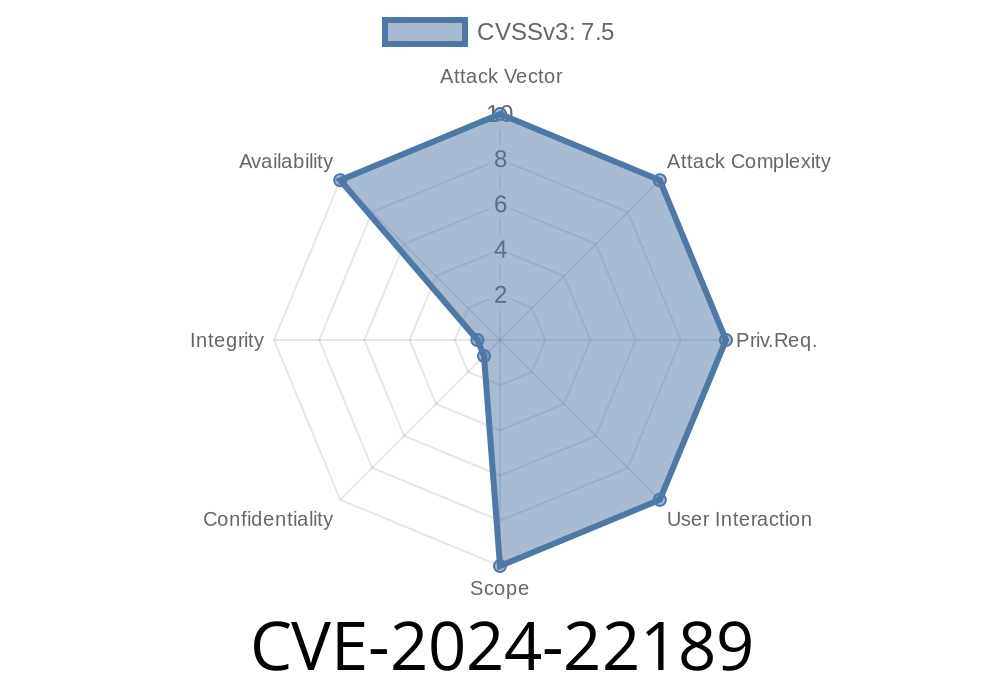quic-go is a widely used Go package that provides an implementation of the QUIC protocol, a high-performance and low-latency transport protocol that forms the foundation of HTTP/3. It is crucial for modern web applications and services to perform optimally and securely. A vulnerability has been discovered in quic-go versions prior to .42. which could be exploited by an attacker to cause a targeted service to run out of memory, potentially leading to a denial of service. This blog post delves into the critical details of this vulnerability, including its underlying mechanics, as well as code snippets and mitigation strategies.
Vulnerability Details (CVE-2024-22189)
A memory exhaustion vulnerability exists in the quic-go package, specifically in the handling of NEW_CONNECTION_ID frames, which allow for the creation of new connection identifiers on an active QUIC connection. An attacker can exploit this vulnerability by sending a large number of NEW_CONNECTION_ID frames while retiring old connection IDs, ultimately causing the targeted service's memory resources to be consumed. The receiver of these NEW_CONNECTION_ID frames is expected to respond with a corresponding number of RETIRE_CONNECTION_ID frames.
To worsen the situation, the attacker can prevent the receiver from sending out the vast majority of these RETIRE_CONNECTION_ID frames. They can do this by collapsing the target's congestion window using selective packet acknowledgements and manipulating the target's Round-Trip-Time (RTT) estimates. This effectively leaves the targeted service unable to free up memory resources tied to the old connection IDs, thereby hindering its functionality.
Here's a code snippet demonstrating the exploitation of this vulnerability
func ExploitMemoryLeak(target quic.Session) {
for {
connID := GenerateNewConnectionID()
frame := &quic.NewConnectionIDFrame{
SequenceNumber: GetNextSequenceNumber(),
RetirePriorTo: GetRetirePriorTo(),
ConnectionID: connID,
StatelessResetToken: GenerateStatelessResetToken(),
}
SendMessageToPeer(target, frame)
CollapsePeerCongestionWindow(target)
ManipulatePeerRTTEstimate(target)
}
}
Mitigation
It is highly recommended to upgrade to quic-go version .42. or later, as it contains a patch that addresses this vulnerability. The patch ensures efficient handling of NEW_CONNECTION_ID frames and prevents the memory exhaustion issue. It is also worth noting that there are no known workarounds for this vulnerability, so upgrading to a patched version is crucial for maintaining a secure environment.
Original References
1. The official quic-go GitHub repository, which contains documentation, code, and releases: https://github.com/lucas-clemente/quic-go
2. The CVE details in the National Vulnerability Database (NVD): https://nvd.nist.gov/vuln/detail/CVE-2024-22189
3. Release notes for quic-go version .42., which contains the patch for this vulnerability: https://github.com/lucas-clemente/quic-go/releases/tag/v.42.
Conclusion
This memory exhaustion vulnerability, identified as CVE-2024-22189, in quic-go prior to version .42. highlights the importance of keeping software up-to-date, particularly for widely used libraries and frameworks such as quic-go. As part of maintaining a secure application or service that relies on the QUIC protocol, updates should be applied promptly, along with regular monitoring for new security patches and version releases.
Timeline
Published on: 04/04/2024 15:15:37 UTC
Last modified on: 04/04/2024 16:33:06 UTC
